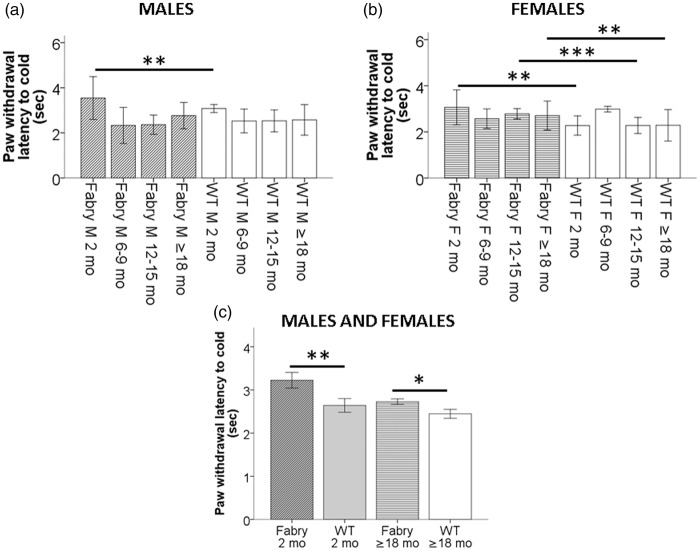Figure 3.
Paw withdrawal latencies to cold stimulation. Bar graphs show the results of the cold test in naïve 2, 6–9, 12–15, and ≥18 months old α-GAL deficient (Fabry ko) and wild-type (WT) male (a) and female (b) mice. Young male Fabry ko mice of two months of age had longer paw withdrawal latencies to cold stimulation than WT mice. Female Fabry ko mice (2 months, 12–15 months, ≥18 months) had longer cold withdrawal latencies compared to their WT littermates. In (c) results of male and female naïve 2 and ≥18 months old α-GAL deficient Fabry ko and WT mice are averaged each. Young and old Fabry ko mice show cold hyposensitivity with increased paw withdrawal latencies to cold stimulation when compared with their WT littermates. Fabry ko: 2 months (7 male, 14 female), 6–9 months (31 male, 36 female), 12–15 months (24 male, 20 female), ≥18 months (32 male, 58 female). WT: 2 months (5 male, 6 female), 6–9 months (36 male, 28 female), 12–15 months (32 male, 20 female), ≥18 months (26 male, 21 female). F = female; M = male; mo = months; *p < 0.05, **p < 0.01, ***p < 0.001.

